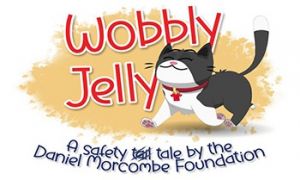Setting children up for a confident and joyful start to school begins long before the first bell. This guide brings together evidence-informed strategies, play-based activities, and partnership ideas to help preschoolers develop the skills, independence, and emotional resilience they need for their big leap into school.
Why School Readiness Matters
Children who feel prepared:
-
Approach school with curiosity instead of fear
-
Engage more readily in classroom routines
-
Form positive relationships with peers and teachers
-
Build a foundation for lifelong learning
Focusing on holistic readiness—social, emotional, cognitive, and physical—empowers each child to thrive in the school environment.
Personalise Learning Targets
-
Review observation notes to identify emerging strengths—letter recognition, counting interest, or social curiosity.
-
Co-construct 1–2 “readiness goals” with each child: for example, “I can write my name” or “I can wait my turn.”
-
Use simple goal-tracking charts or “I Can” posters in the room to celebrate progress.
Intention-Driven Play Experiences
-
Design play invitations that weave in letters and numbers: • A post office station for letter sorting • A pretend grocery shop to practise counting and money concepts
-
Rotate small-group workshops: one session for name-writing, another for pattern exploration.
-
Encourage child-initiated extensions—if a child loves storybooks, introduce an author’s corner where they “write” their own tales.
Embedding Intentional, Play-Based Learning
Play remains the vehicle for discovery—but with a clear eye on school readiness.
- Follow children’s interests (for example, letter fascination) and design purpose-built experiences.
- Scaffold literacy through story-based play, name-writing stations, and alphabet hunts.
- Integrate early numeracy via counting games, measurement activities, and pattern exploration.
Build Foundational Literacy & Numeracy
Embed literacy and numeracy through playful, meaningful experiences.
Literacy Activities
-
Alphabet treasure hunts: Hide letter cards around the room and encourage matching upper- and lowercase pairs.
-
Name-writing stations: Set out paper, pencils, and name labels. Celebrate every scribble and stroke.
-
Story-dictation corner: Children “write” stories by telling them aloud while an educator or peer scribes.
Numeracy Activities
-
Counting cafés: Use play food and play money to practice counting, addition, and exchange.
-
Pattern-making art: Encourage repeating shapes, colours, or stickers along a strip of paper.
- Block-stack challenges: Set simple goals (“Can you build a tower of six?”) to reinforce one-to-one correspondence.
Advance Motor Skills
-
Offer daily stations for fine-motor practice: beading, cutting shapes, and tracing letters.
-
Create weekly gross-motor circuits: balance beams, hopping squares, and beanbag toss.
-
Connect motor tasks to school tools—practice carrying a lunchbox, opening zips, and handling pencils.
Cultivate Independence, Routines & Self-Help Skills
Small daily routines build big confidence for school life.
-
Cloakroom routines: Use picture-strip guides for hanging bags, coats, and hats.
-
Snack-preparation roles: Rotate responsibilities—pouring milk, spreading butter, clearing plates.
-
Toileting landmarks: Post visual hygiene steps and role-play hand-washing songs.
-
Backpack practice: Teach zipping, unzipping, and organising lunchboxes.
-
Embed self-help tasks into daily flow: • Self-serving snack stations • Shoes-on and coat-off relay races
-
Phase out daytime naps with a calm-down corner stocked with books or fidget tools.
-
Scaffold multi-step instructions visually—use picture strips for toileting, hand-washing, and cloakroom routines.
Nurture Social & Emotional Competence
Emotional regulation and peer skills help children navigate their new community.
-
“Feelings check-in”: Begin each day with a circle of emoji cards or a calm-corner talk.
-
Social stories: Read or create simple narratives about first-day jitters, making friends, and asking for help.
-
Role-play scenarios: Practice lining up, sharing resources, and turning to teachers with questions.
-
Resilience boosters: Celebrate small successes (“You tried again after it was tricky!”) to build a growth mindset.
- Share photos and stories about the school environment to demystify the setting.
- Read books and create group discussions around starting “big school.”
- Celebrate small successes—zipping coats, writing names, making friends—to build perseverance.
Foster Social Confidence
-
Plan cooperative challenges—parachute games, group building blocks, and partner puzzles.
-
Model and reinforce language for sharing, turn-taking, and conflict resolution (“I feel upset when…”).
-
Celebrate successful collaborations with class cheers or sticker rewards.
Enhance Physical & Motor Development
Classroom and playground activities alike demand strong fine- and gross-motor skills.
| Domain | Activities | School Connection |
|---|---|---|
| Fine motor skills | Beading laces, tracing letters, scissor cutting | Holding pencils, opening books |
| Gross motor skills | Obstacle courses, ball games, jumping rope | Playground play, lining up safely |
Rotate weekly stations to ensure balanced development and scaffold toward school-style tools.
Engage Families as Transition Partners
Families are vital allies in school readiness—share goals and activities that bridge home and service.
-
Parent workshops: Host short sessions on school routines, readiness goals, and at-home play ideas.
-
Home-play packs: Send simple letter hunts, counting games, or emotion-chart printables.
-
Fortnightly snapshots: Provide each family with their child’s one or two focus goals and suggested home activities.
-
Two-way journals: Invite families to record home observations and celebrate milestones.
Reflect, Track & Celebrate Progress
Regular reflection keeps goals in focus and adapts strategies to each child’s journey.
-
Use a simple tracker (printable or digital) aligned to EYLF outcomes.
-
Identify one or two readiness goals per child for the next fortnight.
-
Plan targeted experiences—both child-led and educator-guided.
-
Meet weekly as a team to review observations and adjust scaffolds.
-
Share successes in portfolios and classroom displays to build pride and motivation.
Collaborating with Local School Teachers
Building strong relationships with nearby primary schools smooths the pathway to Kindy.
- Arrange classroom visits or informal meet-ups with teachers.
- Share observation notes on each child’s emerging skills and areas for growth.
- Align your curriculum focus with the school’s expectations around literacy, numeracy, and self-management.
- Learn school-specific routines (e.g., lunch protocols, lineup signals)
- Co-design a simple transition plan or booklet to share with families
By weaving intentional play, strong partnerships, and targeted reflection into everyday routines, educators create a powerful scaffold that carries four-year-olds confidently into school life. Use this guide as a flexible roadmap—adapt activities to your group, deepen collaborations with families and schools, and watch your kinders flourish.
Further Reading
School Readiness Program
What Is School Readiness
School Readiness In Early Childhood
How Play Based Learning Supports School Readiness
Supporting Children's Transition To School
Pre-Writing Skills Activities For Preschoolers
Importance Of Pre-Writing Skills


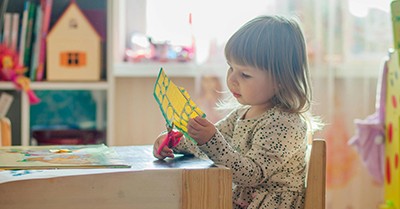




 As an Educator in Australia, your pay rate falls under the Children’s Services Award 2010. This award states the minimum amount that an employer can
As an Educator in Australia, your pay rate falls under the Children’s Services Award 2010. This award states the minimum amount that an employer can When working as a qualified Early Childhood Teacher (with a university degree) within a service, your rate of pay will come from the Educational Services
When working as a qualified Early Childhood Teacher (with a university degree) within a service, your rate of pay will come from the Educational Services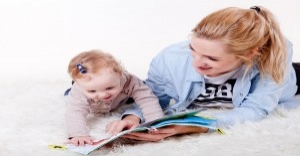 When working as a Diploma Qualified Educator your pay rate is from the Children's Services Award 2010. This Award states your minimum rate of pay
When working as a Diploma Qualified Educator your pay rate is from the Children's Services Award 2010. This Award states your minimum rate of pay When working as a Cert 3 Qualified Educator, your pay rate is from the Children's Services Award 2010. This Award states your minimum rate of
When working as a Cert 3 Qualified Educator, your pay rate is from the Children's Services Award 2010. This Award states your minimum rate of Educational Leaders play a crucial role in their early childhood service by ensuring that the educational program aligns with best practices and supports the holistic
Educational Leaders play a crucial role in their early childhood service by ensuring that the educational program aligns with best practices and supports the holistic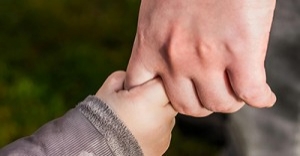 In early childhood education and care, ratios are more than a technicality—they are a frontline safeguard. Every child deserves responsive supervision, emotional connection, and developmental
In early childhood education and care, ratios are more than a technicality—they are a frontline safeguard. Every child deserves responsive supervision, emotional connection, and developmental With the new national child safety reforms kicking in on 1 September 2025, early childhood services like yours have a real opportunity to lead the
With the new national child safety reforms kicking in on 1 September 2025, early childhood services like yours have a real opportunity to lead the Here’s a comprehensive Mobile Phone and Smart Watch Policy tailored for early childhood education and care (ECEC) services in Australia, aligned with the latest 2025
Here’s a comprehensive Mobile Phone and Smart Watch Policy tailored for early childhood education and care (ECEC) services in Australia, aligned with the latest 2025 The Sea of Fish Challenge is a national initiative that invites children, educators, families, and communities to create and display fish artworks as a symbol
The Sea of Fish Challenge is a national initiative that invites children, educators, families, and communities to create and display fish artworks as a symbol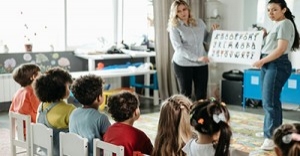 Across the early childhood education and care sector, educators are sounding the alarm: current staffing ratios are insufficient to deliver safe, meaningful, and developmentally appropriate
Across the early childhood education and care sector, educators are sounding the alarm: current staffing ratios are insufficient to deliver safe, meaningful, and developmentally appropriate

